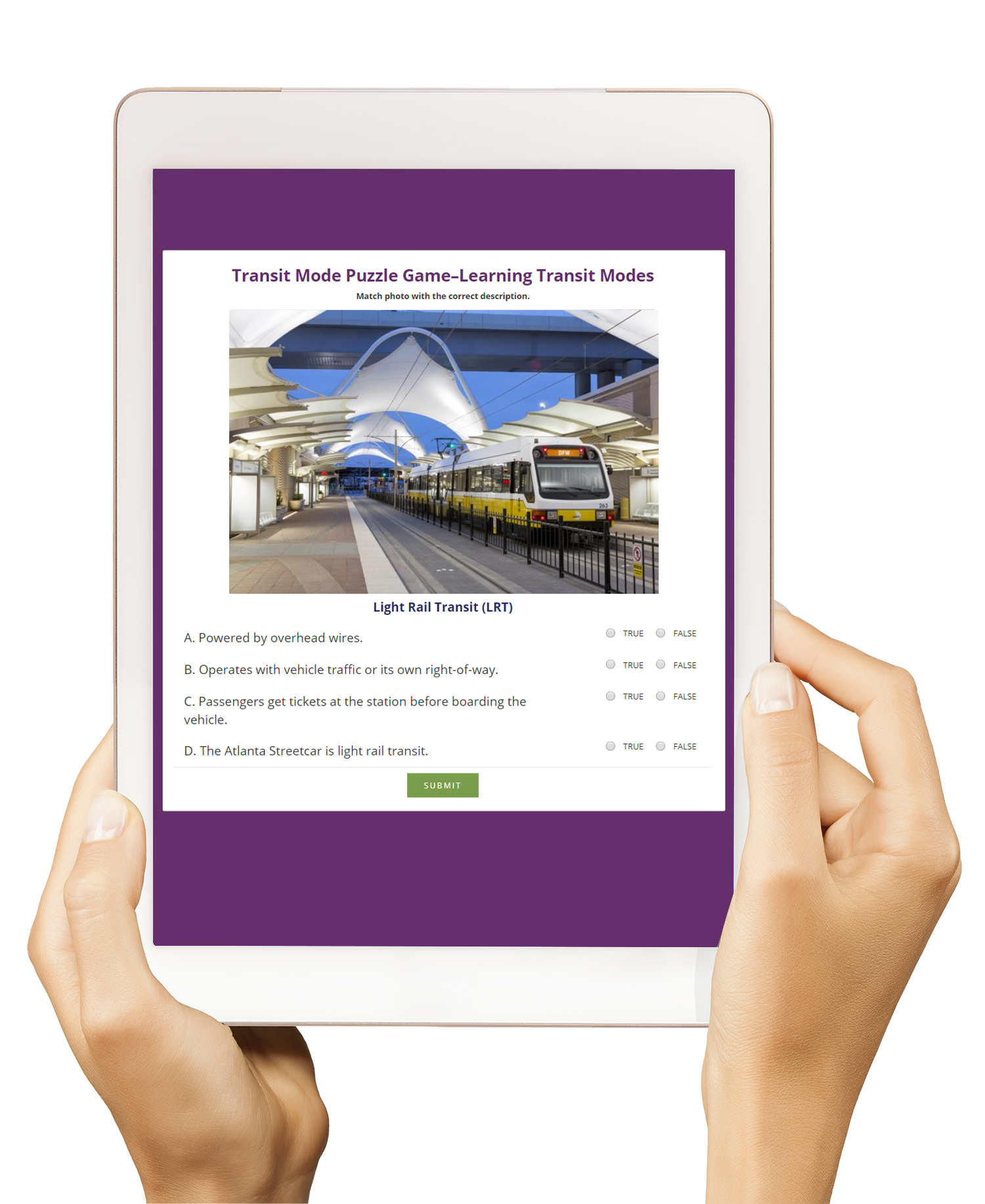
Learn More
Different Types of Transit Service & Vehicles
Which option is right for DeKalb County? There are so many transit options. Most communities find that a single option isn’t enough. A community has to have a mix of transit options to meet the needs of its residents. To learn more about the different types of transit and what makes them work, explore the information below.
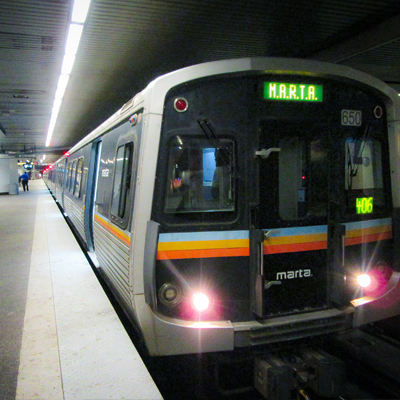
Heavy Rail Transit (HRT)
Heavy rail trains operate on tracks so that they are not affected by automobile congestion. Heavy rail trains carry more people and travel at faster speeds than light rail trains, but they are more expensive to build. Typically, trains are powered electrically from a third rail. Heavy rail can operate at ground level, on an elevated structure, or below ground. The frequency of heavy rail is typically 15 minutes or less. Passengers pay to enter stations (not the train itself) which speeds the boarding process. Passengers board from platforms that are level with the train’s floor which helps people of all abilities to board more easily. Stations are typically spaced at least a mile apart, but may be closer together in dense urban areas, such as Downtown or Midtown Atlanta. Stations in urban areas offer access for pedestrians, bicyclists and drop-off passengers. Stations in suburban areas typically offer all of those access options plus parking areas. Stations may offer amenities like ticket vending machines, customer service kiosks, directional signs, real-time train arrival information, etc. MARTA trains are considered heavy rail.
Operating Cost (per vehicle/per hour): Approx. $250-$300
Capital (per mile): Approx. $250M

Light Rail (LRT)
Light rail and streetcar systems are very similar although streetcar systems tend to operate at lower speeds, and therefore, over shorter distances than light rail systems. Light rail trains may operate in their own lane so that they are not affected by automobile congestion. Light rail trains carry fewer people and travel at slower speeds than heavy rail trains, but they are less expensive to build. Typically, trains are powered electrically from an overhead wire. Light rail is most often operated at ground level, but they can operate below ground. The frequency of light rail is typically 15 minutes or less. Passengers pay to enter stations (not the train itself) which speeds the boarding process. Passengers board from platforms that are level with the train’s floor which helps people of all abilities to board more easily. Stations are typically spaced at least a mile apart, but can be closer in urban areas. Additionally, streetcar stations are usually ¼–½ mile apart. Stations may offer amenities like ticket vending machines, directional signs, real-time train arrival information.
Operating Cost (per vehicle/per hour): Approx. $250-$350
Capital (per mile): Approx. $120M (streetcar $75M)

Arterial Rapid Transit (ART)
Commonly referred to as ART, arterial rapid transit is a frequent bus service with strategic enhancements to improve its speed and reliability. ART vehicles operate on regular streets such that they are affected by automobile congestion, but they incorporate short bus-only lanes adjacent to major intersections to reduce delays. ART vehicles carry the same number of people as BRT vehicles, but they tend to travel at slower speeds due to being in normal traffic lanes. They are also less expensive to build than BRT because a dedicated travel lane is not needed. The frequency of ART is typically 15 minutes or less. Buses can be fueled by gasoline, diesel, compressed natural gas, electricity, or a hybrid of fuel sources. ART buses are often articulated. ART systems may also employ technology to reduce delay caused by traffic signals. Passengers may pay at select stations, which speeds the boarding process. Passengers board from platforms that are level with the bus’s floor which helps people of all abilities to board more easily. Stations are typically spaced about 1/3 mile apart. Stations offer amenities like ticket vending machines, real-time bus arrival information, etc.
Operating Cost (per vehicle/per hour): Approx. $100-$150
Capital (per mile): Approx. $2.5M
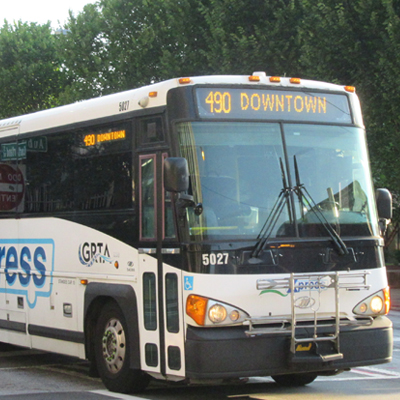
Express/High Capacity Bus Service
Express bus service is designed to pick up commuters near their residences and take them directly to an employment district with very few stops along the way. Express buses operate on regular streets such that they are affected by automobile congestion. Express buses carry fewer people than BRT/ART vehicles. Capital costs are limited to vehicles, park-and-ride facilities, and stop infrastructure. The frequency of express bus service varies, but it is typically concentrated during peak morning and evening commute periods with only one or two trips during the middle of the day. Buses can be fueled by gasoline, diesel, compressed natural gas, electricity, or a hybrid of fuel sources. Express buses are designed for greater comfort than local buses as passengers ride longer distances on them and they often use interstates for travel. Passengers pay when they enter the bus which slows the boarding process. Buses have lifts to assist passengers with limited mobility. Express bus service often originates in a park-and-ride lot and drops passengers off at standard bus stops. GRTA Xpress is an example of express bus service in DeKalb County. MARTA also has express services in DeKalb County (e.g. Route 186).
Operating Cost (per vehicle/per hour): Approx. $150-$250
Capital (per mile): Approx. $600-$800K (per vehicle)
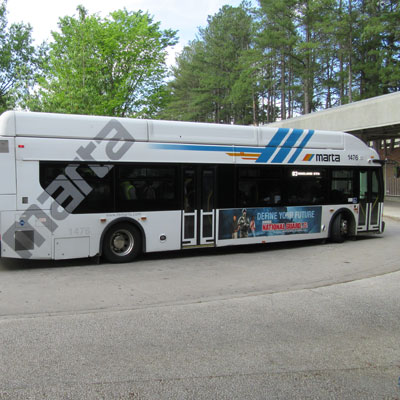
Local Bus Service
Local bus service is designed to make frequent stops along a fixed route and schedule. Local buses operate on regular streets and are affected by automobile congestion. Local buses carry approximately 40 seated passengers, but can have standing passengers as well. Capital costs are limited to vehicles and stop infrastructure. The frequency of local bus service varies substantially from 10 minutes on high demand routes in peak periods to 60 minutes during evenings and on weekends. Buses can be fueled by gasoline, diesel, compressed natural gas, electricity, or a hybrid of fuel sources. Passengers pay when they enter the bus which slows the boarding process. Buses have ramps to assist passengers with limited mobility. This service uses traditional bus stops that vary between a stop with only a bus stop sign to a stop with a sheltered seating area. MARTA operates local bus services in DeKalb County.
Operating Cost (per vehicle/per hour): Approx. $100-$150
Capital (per mile): Approx. $600-$800K (per vehicle)
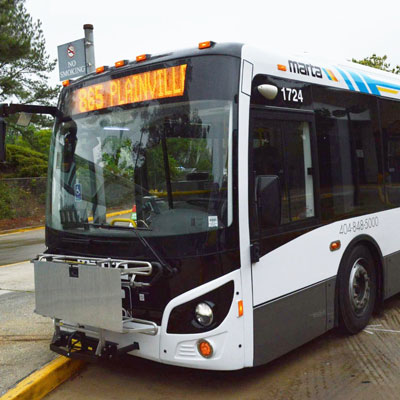
Community Circulator
A community circulator is very similar to local bus service but operates on shorter circular or linear routes that connect residents and employees with local medical, grocery, retail, and other services. Community circulators have frequent stops along a fixed route although some may allow short deviations from the route when requested by a passenger. Some circulators operate on a schedule while others merely circulate continuously on a route. Community circulators operate on regular streets and are affected by automobile congestion. Community circulator buses are often smaller than local buses (e.g., 23 passengers versus 40 or more). Capital costs are limited to vehicles and stop infrastructure. The frequency of community circulators is usually 30 or 60 minutes. Buses are typically fueled by gasoline or diesel. Passengers pay when they enter the bus which slows the boarding process. Buses have ramps to assist passengers with limited mobility. Circulator service uses traditional bus stops which vary between a stop with only a bus stop sign to a stop with a sheltered seating area. An example of a community circulator operated by MARTA is the route between Decatur Station and the Belvedere Community near Memorial Drive and Columbia Drive (Route 823).
Operating Cost (per vehicle/per hour): Approx. $100-$150
Capital (per mile): Approx. $400-$800K (per vehicle)
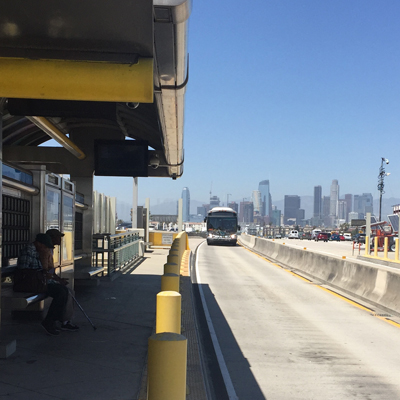
Bus Rapid Transit (BRT)
Commonly referred to as BRT, bus rapid transit is a bus that is operated like a train. BRT vehicles may operate in their own lane so that they are not affected by automobile congestion. BRT vehicles carry fewer people and travel at slower speeds than trains, but they are much less expensive to build. Buses can be fueled by gasoline, diesel, compressed natural gas, electricity, or a hybrid of fuel sources. BRT buses are often articulated and more stylized than local buses. BRT is most often operated at ground level, but they can operate below ground. The frequency of BRT is typically 15 minutes or less. Passengers pay to enter stations (not the bus itself) which speeds the boarding process. Passengers board from platforms that are level with the bus’s floor which helps people of all abilities to board more easily. Stations are typically spaced about 1/3 mile apart, but can be closer in highly developed urban areas. Stations offer amenities like ticket vending machines, directional signs, and real-time bus arrival information.
Operating Cost (per vehicle/per hour): Approx. $100-$150
Capital (per mile): Approx. $25M
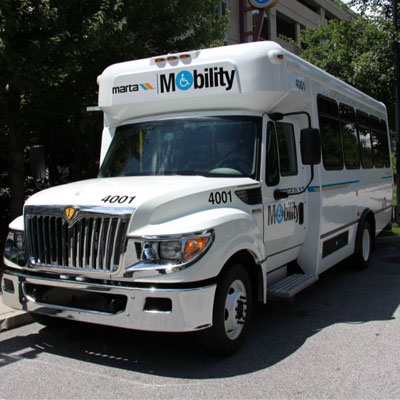
Paratransit Service
Under Federal law, transit agencies are required to provide complementary paratransit service to residents who live within ¾-mile of a transit line, but cannot reach the stop or station due to a cognitive, developmental, or physical disability. Paratransit service is a reservation-based shared ride. Depending on the individual’s abilities and the situation, the service may be curb-to-curb, door-to-door, or a feeder service (i.e. taking the passenger from their home to the rail station for them to continue their trip using the transit system). Capital costs are limited to vehicles. Paratransit fares are typically higher than local bus service, but they are capped by Federal law at twice the regular transit fare. Personal care attendants (PCA) accompanying a passenger travel free of charge. Passengers must submit an application to be approved to use the service. Paratransit service is provided by MARTA in DeKalb County.
